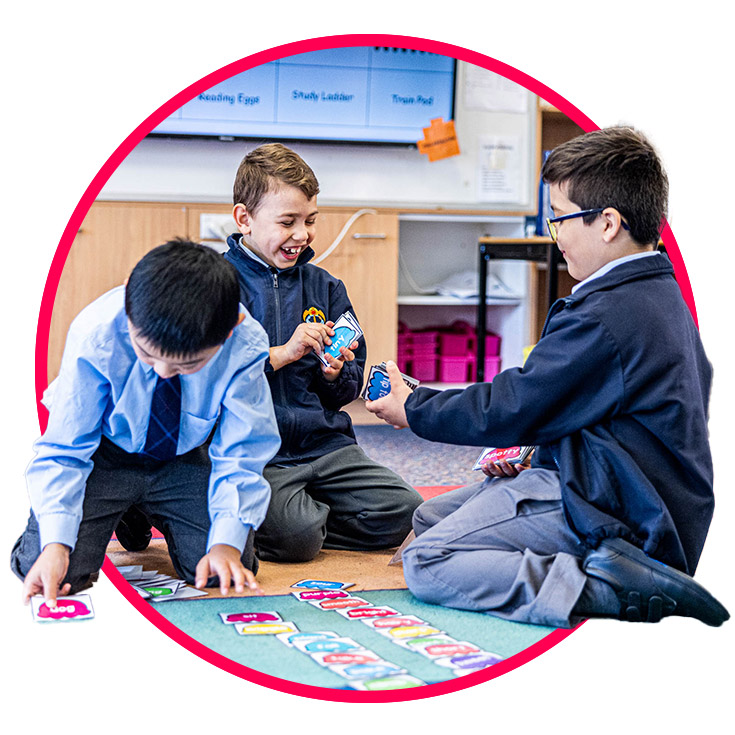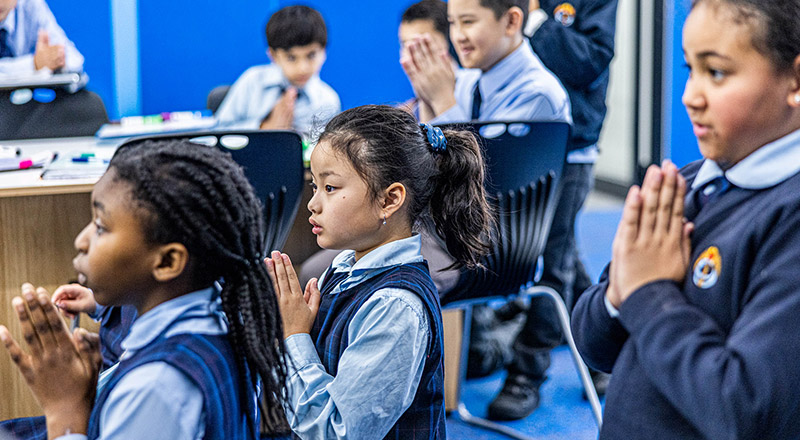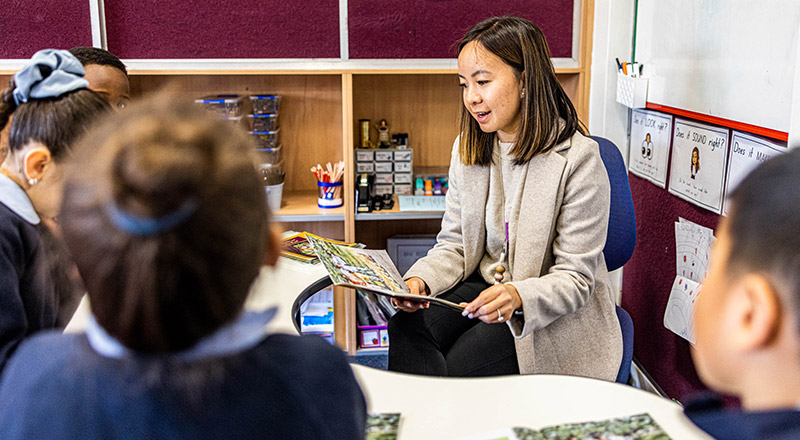Educating for the future
The learning journey at St Margaret Mary's honours the developmental stages in a student’s life. Based on leading educational research and the best of today’s technologies, we prepare students for the future by teaching them how to think critically and creatively, how to communicate effectively and how to lead and work both independently and collaboratively.
Educating for the future

The key learning areas
We follow the NSW Education Standards Authority (NESA) approved curriculum in the key learning areas of:
Religious Education
As a Catholic school we also have a strong religious dimension that runs through all the KLAs and is also formally recognised as the KLA of Religious Education.
St Margaret Mary's students take part in formal Religious Education every day, based on the new Catholic Schools Parramatta Diocese curriculum, Encountering Jesus. This curriculum invites all students to consider how the teachings of Jesus Christ can apply to their lives.
Religious Education

Building capable learners
St Margaret Mary's Primary is a place where curiosity, imagination and love of learning are treasured.
We are 21st century educators, embracing innovative ideas and best practices. We tailor our approach to meet each student's unique strengths and needs.
Technology is integrated across the curriculum so that students can confidently meet the challenges of the future.
As the building blocks for all learning, we have a strong focus on Literacy and Numeracy throughout our learning and teaching programs.

Literacy
Our school places a strong emphasis on quality teaching of literacy. Students are encouraged daily to challenge themselves to read, write, listen and speak with confidence.
Our curriculum focuses on core literacy skills such as:
- phonics
- spelling
- handwriting
- sentence structure.
Across the school, every student is expected to read each night. They record their progress by keeping their own reading diary.

Numeracy
At St Margaret Mary's Primary, students build their understanding and fluency in mathematical principles.
We grow student’s capacity across the maths curriculum, including:
- algebra
- measurement
- geometry
- statistics
We offer a varied curriculum that is engaging and relevant!
Contact St Margaret Mary's TODAY to learn more about our innovative learning community.
Our learning
Discover how we help every student achieve their best.
Pursuing passions
Extracurricular opportunities for students.
How to enrol
Let us help you get started on the enrolment process.
Contact us
Have a question? Our friendly school staff can help.

